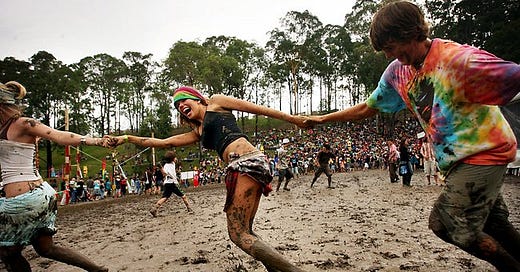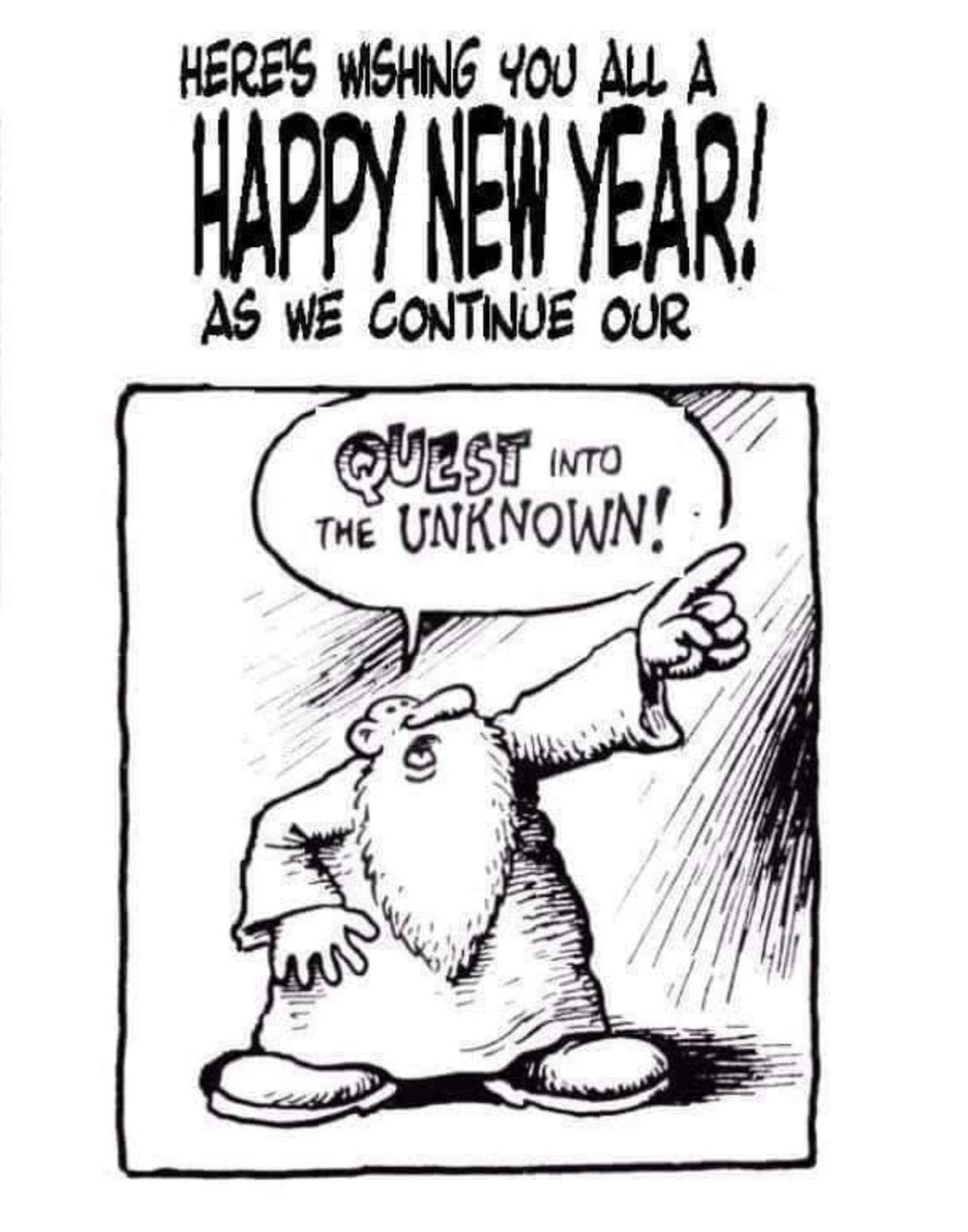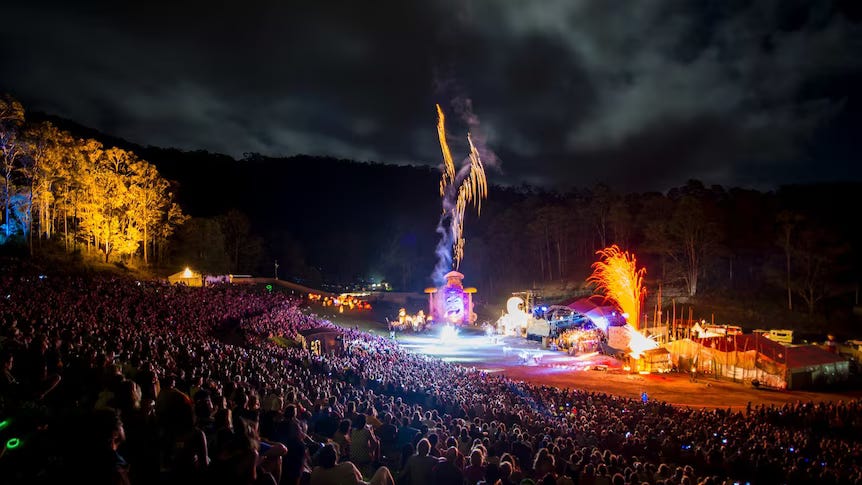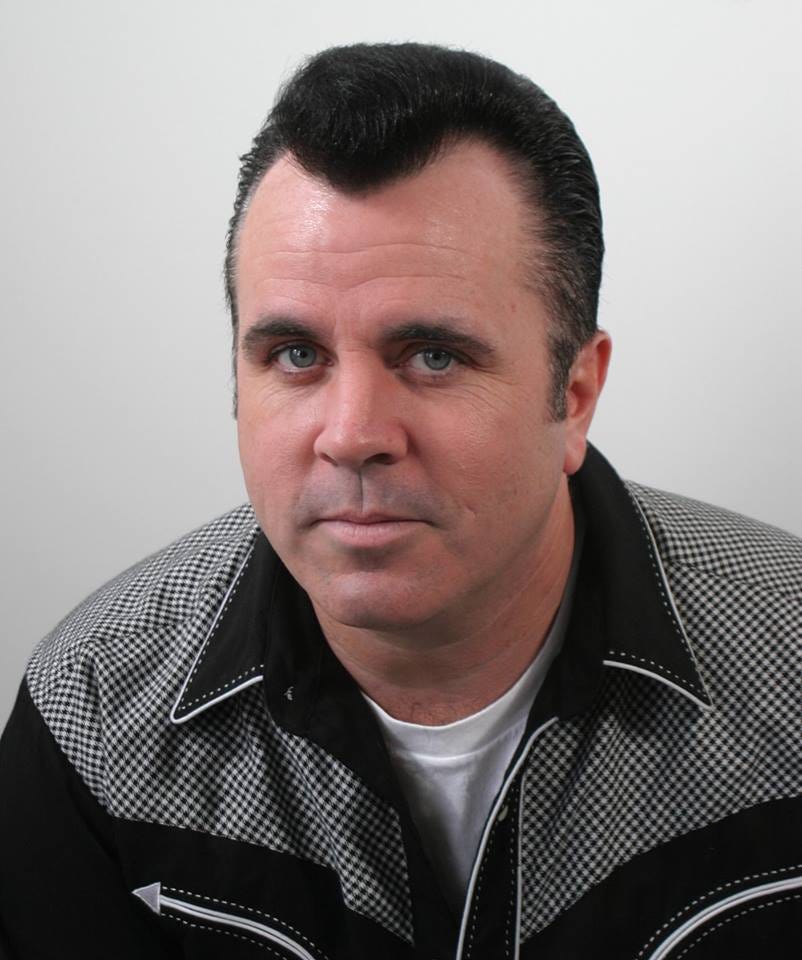Here comes another near year; welcome 2024, with all he optimism that will probably be dashed within weeks. This week there’s a personal story about this writer’s first trip to the other end of the world. And some other stuff to keep you occupied as another year rolls around.
This weekly Substack is the work of Richard Flohil, a 60-year veteran who’s spent most of his life working in the Canadian music business. He can’t sing, play an instrument, or even dance, but he can tell stories.
On the road Down Under: Sex, drugs & rock and roll?
Alas, there was no sex, very few even mild drugs and not much rock and roll at the 2010 Woodford Folk Festival, an Australian event of such size and magnitude that it makes any music-oriented affair in Canada look a little like a church tea party.
Australia is the country at the other end of the world and it takes approximately a day and half to get there from central Canada. All I know, looking back, is that I left Toronto on December 23rd and arrived on Christmas Day, and left to come home on January 1st and arrived on January 1st, still jet-lagged when I arrived home from the flights I took to get there. Like most people, I don’t understand the International Date Line, and I can’t be bothered to learn about it.
The travel writer Bill Bryson, in his excellent 2000 book In a Sunburned Country, was specific about Australia. After the obligatory description of all the animals that can kill you there, he added: “In short, there is no place in the world like it. (It) is the driest, flattest, hottest, most desiccated, infertile, and climatically aggressive of all the inhabited continents… ”
Australia’s past as a penal colony did not prepare me for the surprise of Sydney; at the other end of the world, I expected some sort of colonial backwater. Instead, I found a bustling, diverse, sky-scrapered city that instantly reminded me of Toronto, full of different neighbourhoods, good restaurants, amiable coffee shops, and friendly open-hearted people.
+++++++++++++++++++++++++++++++
The whole trip came in the form of a surprise offer of a free ticket from an old friend, John Sinclair, an agent in Melbourne who once lived in Toronto. Back in the day, he brought over Australian groups like Weddings Parties Anything (which has one of the best band names ever) and The Black Sorrows — I presented them in Toronto at the Diamond and in some skuzzy bar in Kensington Market (the name of which I can’t remember), as well as at the Mariposa Folk Festival.
Eight years before I had introduced Sinclair to Serena Ryder at a showcase in Winnipeg, and he had brought her to Australia three or four times since. So, could he return the favour; could I come out to Oz, he asked, go to a festival, check out some of his artists, and see if I could spread the word about them in Canada?
Apart from John, though, I had other links to Australia. One was my friend Kathleen Miller, who, in the day, was a memorable character on the Toronto scene — outrageous, in your face, and a manic dancer at the good old El Mocambo. Apart from the fact that she would cheerfully flash her breasts at anyone who would likely get the joke and enjoy the view, she also introduced me to my then-wife Donna, so I owed her for that as well.
She picked me up at the airport in Brisbane and took me to her nice suburban house. Within three hours, she’d served up a Christmas dinner — turkey, stuffing, mashed potatoes and snags (which is what the Australians call sausages) from the barbie (which is what Australians call the BBQ).
After a day and a half, a guided tour of Brisbane, and quick trip to the Boxing Day sales downtown, I went back to the airport to meet John and his wife as they flew in from Melbourne; we all set off for Woodford, picking up one of the two Canadian acts on the bill (Ember Swift) on the way.
+++++++++++++++++++++++++++++++++
The Woodford Folk Festival is a massive undertaking: 25,000 people a day, for six days. By comparison, the major festivals in Canada pale into insignificance. Most of the folk who attend sleep under canvas in a giant campground. A total of 22 stages and all but one or two are under tents; many of them have bars attached — Australians love their beer.
It starts at 9 a.m. on Boxing Day and ends with fireworks six days later at midnight as the New Year begins. As I write this, the 36th annual festival is in full swing — and the only Canadian participants are Prince Edward Island’s East Pointers. This isn’t a surprise; the festival pays “moderate” fees, according to its website, and does not cover accommodations or travel; if the Canada Council has subsidized the East Pointers’ travel, that’s a damned good use of taxpayer money!
In 2010, the festival hired almost 600 artists in a wide variety of genres — dozens and dozens of singer-songwriters and bands as well as itinerant buskers, jugglers, poets and even the Rt. Hon. Robert Hawke, the iconic former prime minister of Australia, then 80 years old and full of vigour. When I met him, I asked whether I should address him as Mr. Prime Minister. “Nah, mate,” was his response, “ya call me Bob.”
There are close to 2,700 volunteers but, unlike those at Canadian festivals, they are not identified. No T-shirts, no badges (although the volunteers in the parking lots do wear reflective jackets, and the main stage crews do have tiny laminates). The invisible volunteers do their tasks anonymously, for the most part, and the whole event runs like clockwork. Volunteers quietly picked up trash, emptied recycling bins, rounded up artists, and kept the impossible schedule almost always on time.
The site, on Aboriginal land, is 600 acres of forests, ponds, ill-marked paths — and all the structures are temporary, save the “amenities” (which is what the Australians call the toilets/showers). There are well over 100 restaurants, stalls, shops, crafts sellers and coffee spots spread throughout the site, but mostly on the main “roads” that link the stages.
Once the festival’s over, everything is taken down and disappears into storage off-site, and the animals (wallabies, toads, rabbits, snakes, spiders, butterflies, exotic birds) take over again.
Woodford is also known as Mudford, and it hardly stopped raining for the three days I was there, although the temperature never dropped below 40 degrees, even in the middle of the night. As a guest of the festival, I was given a small room in what is called the Woodford Hilton, a collection of construction site trailers, divided into cramped bedrooms. The “amenities,” alas, were a two-minute walk away in the rain, and there was always a line of wet, muddy, tired people with towels waiting for one of the two showers.
On the second night, I smelled so bad that I woke myself up at 5.30 a.m., and got a shower without having to wait 20 minutes.
++++++++++++++++++++++++++++++++
Yes, but what about the music?
The first point to make is that while the music is obviously important, Woodford is more about a gathering of the tribes. Australians are way, way more concerned about water conservation, recycling and green initiatives of all kinds than we are in Canada. And Woodford features concerts, dozens of “workshops,” films, burlesque, a circus, dance of all kinds, vaudeville, an enormous spoken word component (Bob Hawke was one of dozens of participants), comedy, folk and visual arts, and an ambitiously extensive programme for kids.
In short, Woodford is community-driven, not music-driven. That said, there was a hell of a lot of music, but thanks to my continual jet-lag and the foul weather (paddling through mud in the heat and mugginess did not encourage the trek between stages), I didn’t hear as much in three days as I would in a single afternoon at any Canadian festival.
There were few international artists at Woodford that year. One-time pop singer Toni Childs and Kaki King, an extraordinary guitarist, were the only guests from the U.S. Ember Swift and the Winnipeg band Nathan were the only Canadians — and Ember, who led a group called Lentic, was living in China, and sang much of her set in Mandarin. Nathan, sweet and pretty, played to small crowds in one of the smaller tents. And very few of the Australian artists are known outside of Australia, and with the obvious exception of John Butler, none of them were major “stars.”
Butler’s trio was by far the biggest attraction at Woodford; they packed some 10,000 people into the Amphitheatre (the only stage not in a tent) and followed it up the next day with an appearance at the largest tented venue, with some 4,000 people. His show’s encore, at both shows, included an appearance by a group of robed Tibetan monks, singing background chants… and wearing expensive watches and top-of-the-line Nike running shoes.
I returned to Canada seven days later, arriving in Vancouver two hours before I had left Sydney. My daughter, who drove me home when I arrived, told her sister that she had not met her dad at the airport, but instead had greeted an exhausted, stumbling zombie. Festivals, and nearly 30 hours in the air or at airports, will do that to you.
It was another six years before I had the chance to go back to Australia. And those stories will have to wait, but you’ll read them in a few weeks…
The takeaway from all of this is simple: find a way to go Down Under.
And a last word, from Peanuts creator Charles Schulz: “Don’t worry about the world coming to an end. It’s already tomorrow in Australia.”
+++++++++++++++++++++++++++++++++
OH GOD! ANOTHER NEW YEAR! SO HOW LONG WILL YOU KEEP YOUR NEW YEAR’S RESOLUTIONS?
And if your list of good intentions is as long (and mostly trivial) as mine, it won’t be long until they’re forgotten. My promises to myself, in no particular order:
• Make the bed immediately after I’ve got out of it.
• Severely ration the number of times (and the money) spent on Uber.
• Write my journal each day, just before going to bed.
• Read The New Yorker in print, rather than online.
• Do what I can to rid us all of Drug Ford and PeePee Poilievre.
• To be kinder to people less fortunate than I.
• Keep up my 12-step programme to avoid record and book shops.
• Go for long walks every day in the park. 5,000 steps a day, okay?
• And learn, at long last, to enjoy being on my own and alone.
And YOUR resolutions? Let me and other readers know — that’s why the comments box at the end of this post is enabled.
+++++++++++++++++++++++++++++++++
QUOTE OF THE WEEK
My old friend Scotty Campbell was one of my favourite Facebook contributors, until I “lost” him when I was hacked six months ago. He was one of almost 5,000 “friends” (and God knows how many photographs) who vanished into the ether. Meanwhile, my nemesis (probably a pimpled teenager in his mum’s basement in New Jersey) continues to bombard those friends with messages purporting to come from me. Don’t answer ’em, OK?
I digress! Here are a couple of Scotty’s wise posts:
“When writing a story comprised of a modicum of bullshit, you should always start off with at least one basic truth.”
“Love is the unwavering desire to spend time talking, and walking and drinking and laughing, and discussing important and unimportant matters with someone you adore but would frequently like to strangle.”
+++++++++++++++++++++++++++++++++
THAT’S IT (ALMOST)
My thanks to the people who help me put these missives together. Special thanks and appreciation to the people who subscribe and read them. And there are some bonus stories for my PAID subscribers.
This is more personal stuff, and not necessarily about music — but hopefully entertaining. You can read, this time, the story of a teenage boy reporter covering a murder.
Please consider upgrading to PAID. It might cost you all of $6 a month. Won’t make me rich, but it tops up my old age pension!
Keep reading with a 7-day free trial
Subscribe to Stories from the Edge of Music to keep reading this post and get 7 days of free access to the full post archives.








